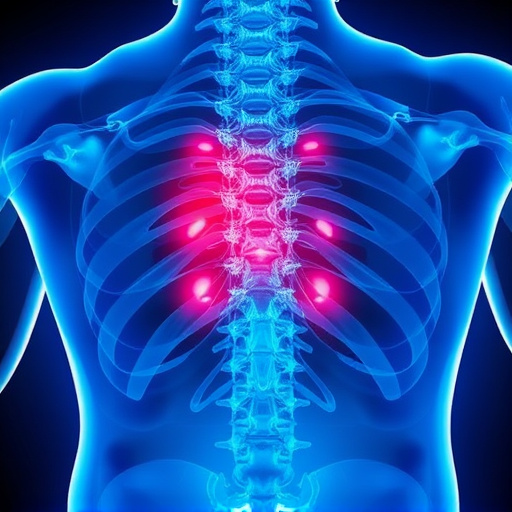Ergonomic injuries caused by unsafe work environments and poor posture lead to musculoskeletal disorders, affecting daily life, productivity, and overall wellness with pain, reduced mobility, and potential chronic conditions. Proactive treatment including chiropractic care, mobility improvement, and wellness practices can prevent long-term issues, restore natural alignment, and enhance movement patterns. Early intervention, focusing on root causes through manual therapy, exercise programs, and ergonomic education, significantly reduces risk of chronic conditions like persistent joint pain. By actively engaging in care plans, patients achieve chronic pain reduction, improved functionality, and lower future injury risks.
Ergonomic injury, often overlooked, can lead to chronic conditions if left untreated. This article explores how early intervention in ergonomic injury treatment plays a pivotal role in preventing long-term health issues. We delve into the understanding of these injuries and their impact on the body’s natural alignment. By examining effective treatment strategies, readers will gain insights into achieving lasting relief and recovery, emphasizing the importance of proactive care for ergonomic-related ailments.
- Understanding Ergonomic Injury and Its Impact on the Body
- The Role of Early Intervention in Preventing Chronic Conditions
- Effective Treatment Strategies for Long-Term Relief and Recovery
Understanding Ergonomic Injury and Its Impact on the Body

Ergonomic injury refers to musculoskeletal disorders resulting from prolonged or repeated exposure to harmful work environments, including improper workstation setup and poor lifting techniques. These injuries can manifest as pain, discomfort, and reduced mobility in various body parts, such as the back, neck, shoulders, and wrists. Over time, if left untreated, ergonomic injuries can lead to chronic conditions like degenerative joint disease, nerve compression, and repetitive strain injuries.
The impact of ergonomic injury extends beyond physical pain. It can negatively affect an individual’s quality of life, productivity, and overall wellness. Fortunately, proactive ergonomic injury treatment plays a pivotal role in preventing these long-term issues. Through mobility improvement techniques, chiropractic care, and other wellness care practices, individuals can restore their body’s natural alignment, enhance posture, and promote better movement patterns. These interventions not only alleviate immediate discomfort but also serve as a robust defense against the progression of chronic conditions.
The Role of Early Intervention in Preventing Chronic Conditions

Early intervention plays a pivotal role in ergonomic injury treatment and preventing chronic conditions from developing. When an ergonomic-related injury is addressed promptly, it significantly reduces the likelihood of long-term issues. Many chronic conditions, such as persistent joint pain or musculoskeletal disorders, can be traced back to poor ergonomics or prolonged neglect of initial discomfort signals from the body. Recognizing these signs early and implementing corrective measures through appropriate injury rehabilitation techniques can be a game-changer.
Chiropractic treatment, for instance, is an effective approach that focuses on improving joint function, reducing inflammation, and alleviating pain. By correcting spinal misalignments or joint restrictions, chiropractic care can address the root cause of many ergonomic injuries. This proactive strategy not only provides immediate joint pain relief but also helps restore natural movement patterns, preventing further damage and fostering a healthier body mechanism over time.
Effective Treatment Strategies for Long-Term Relief and Recovery

Ergonomic injury treatment focuses on addressing the root causes of discomfort and disability to ensure long-term relief and recovery. Effective strategies involve personalized treatment plans tailored to individual needs, incorporating a multi-faceted approach. This often includes manual therapy, exercise programs designed to strengthen and stretch affected muscles, and education on ergonomic principles to prevent future injuries.
By combining these methods, patients can achieve significant chronic pain relief and improved functionality. Ergonomic injury treatment also emphasizes the importance of patient participation and engagement in their care plan. Through consistent practice of recommended exercises and adherence to ergonomic guidelines, individuals can manage their symptoms more effectively and reduce the risk of developing further complications or recurring injuries.
Ergonomic injury treatment isn’t just about fixing the present; it’s a proactive approach to prevent chronic conditions from developing. By addressing misalignments, strengthening weak muscles, and improving work habits early on, individuals can avoid long-term pain and disability. Understanding the impact of ergonomic injuries and implementing effective treatment strategies are key steps towards maintaining a healthy body and enhancing overall well-being.














